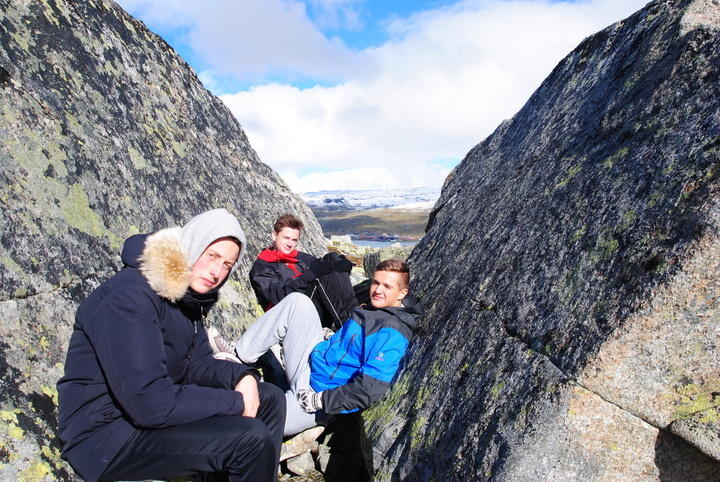Let`s talk about climate: engaging tomorrow`s stewards today
Researchers and school kids with a mission: bridging the gap between climate science and society

Main content
That was the goal for the crash course in climate communication organized by ResClim at the Finse Research Center. (ResClim is the Norwegian Research School in Climate Dynamics, and a national training environment for PhD candidates in climate dynamics). We all threw ourselves in the deep to learn how to get our message across, with the majestic Hardanger glacier watching over us in the background. To find out what we learned, we tested our new skills on the best guinea pigs one could wish for: a group of inquisitive high school kids…
Read the rest of Willem van der Bilt & Karin Landschulze's report from this year's course:
Too hot to handle
Climate scientists are increasingly dragged into the political arena as our field of research is moving up the policy agenda. Sometimes it seems our work is too hot to handle. How can we engage in a constructive dialogue with society without discrediting our scientific authority? Armed and ready with the set of new tools and skills learned during the course, we are now ready to step up to this challenge.
Right place, right time
Time surely is one of the more difficult dimensions of climate change to grasp. A cold winter does not make an ice age. How can we explain the difference between weather and climate or make people aware of changes on timescales far beyond the human dimension? The Finse area is a great field laboratory to explain these concepts through observations. This learning strategy, one of many tricks passed on to us by science education professor Dankert Kolstø, worked extremely well on `our` high school kids.
Ice not us
Glaciers have sculpted this landscape and subdued it to their demands. Ice has waxed and waned: strengthening or loosening its grip on the Finse area. Its personal belongings such as moraines and boulders are still scattered around and provide us with tangible mementos of past and present climate dynamics. Mother nature`s message is clear: it is ice not us that owns this neighborhood.
On the line
On Thursday we had the opportunity to put ourselves on the line by testing our newly acquired skills on a group of high school students taking Geosciences. Teacher Åse Heilund Midttun from Sandsli vgs gave us some valuable insights into high school psychology and the Geosciences curriculum. Nevertheless, most of us were quite nervous as the kids swarmed onto the platform from the morning train. But we retained our composure and quickly divided the herd into manageable groups. Off to an adventure into the wild.
Having a field day
Most students were confident about the weather, wearing leaky sneakers and skinny jeans. But as smartphones gave up in the cold, our students did not. Not even wet socks or a lack of lunch could distract them from being genuinely interested in what we had to tell them. We actually engaged with them on the fundamentals of climate change and what it could mean for their future. Not bad for a bunch of communication rookies and downright impressive for a group of pupils at different levels of the Geosciences curriculum. Making their learning visible proved to be a decisive success factor: we encouraged pupils to explain what they had actually learned to each other in small groups. This exercise surely demonstrated that still waters run deep. Often, the least outgoing students managed to recollect most of the lessons learned. Later that night, our optimistic feeling about the day was confirmed by a wave of enthusiastic social media posts. We really had a field day!
Link to ResClim web page here.
